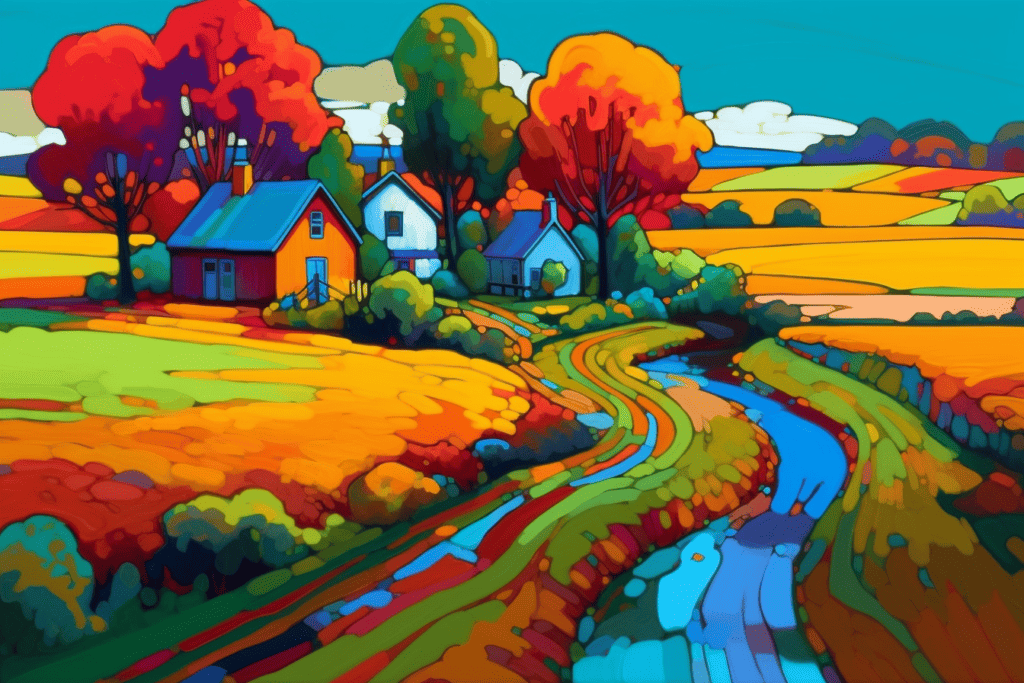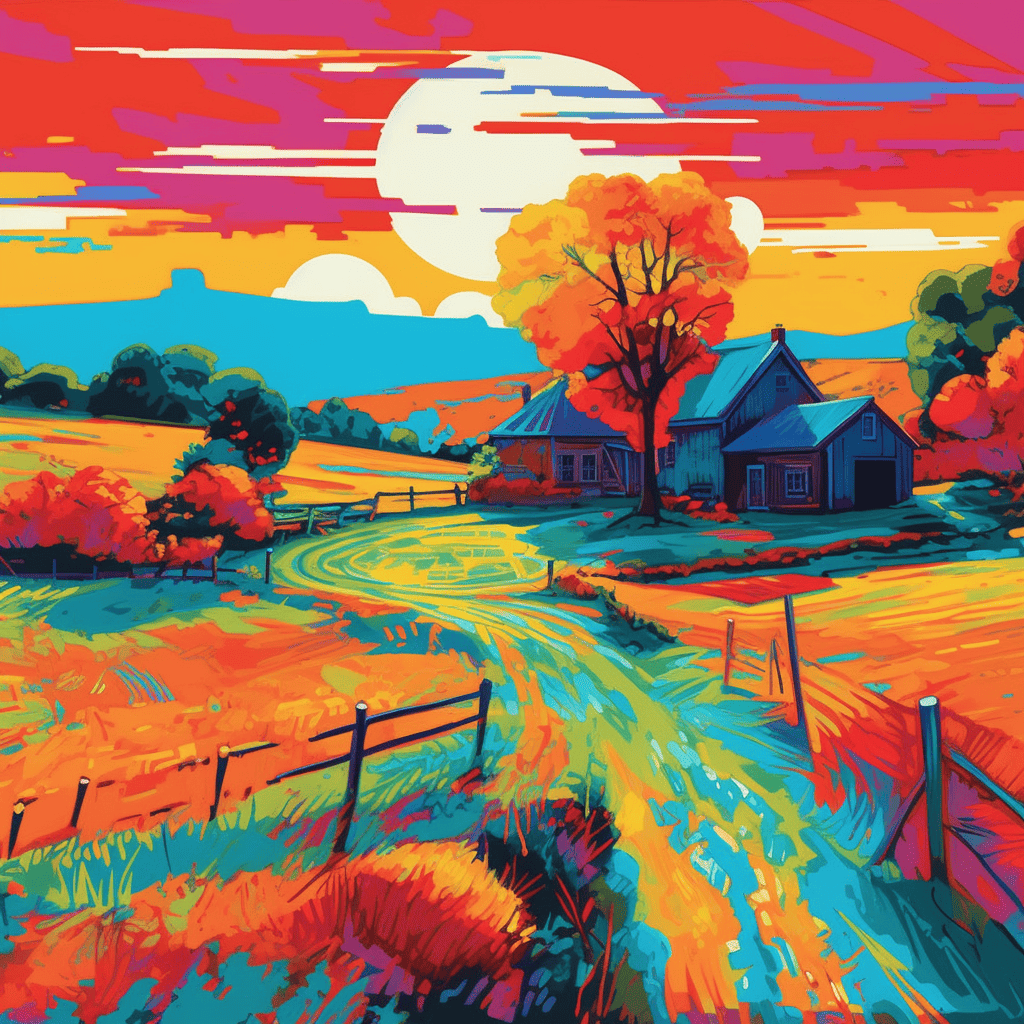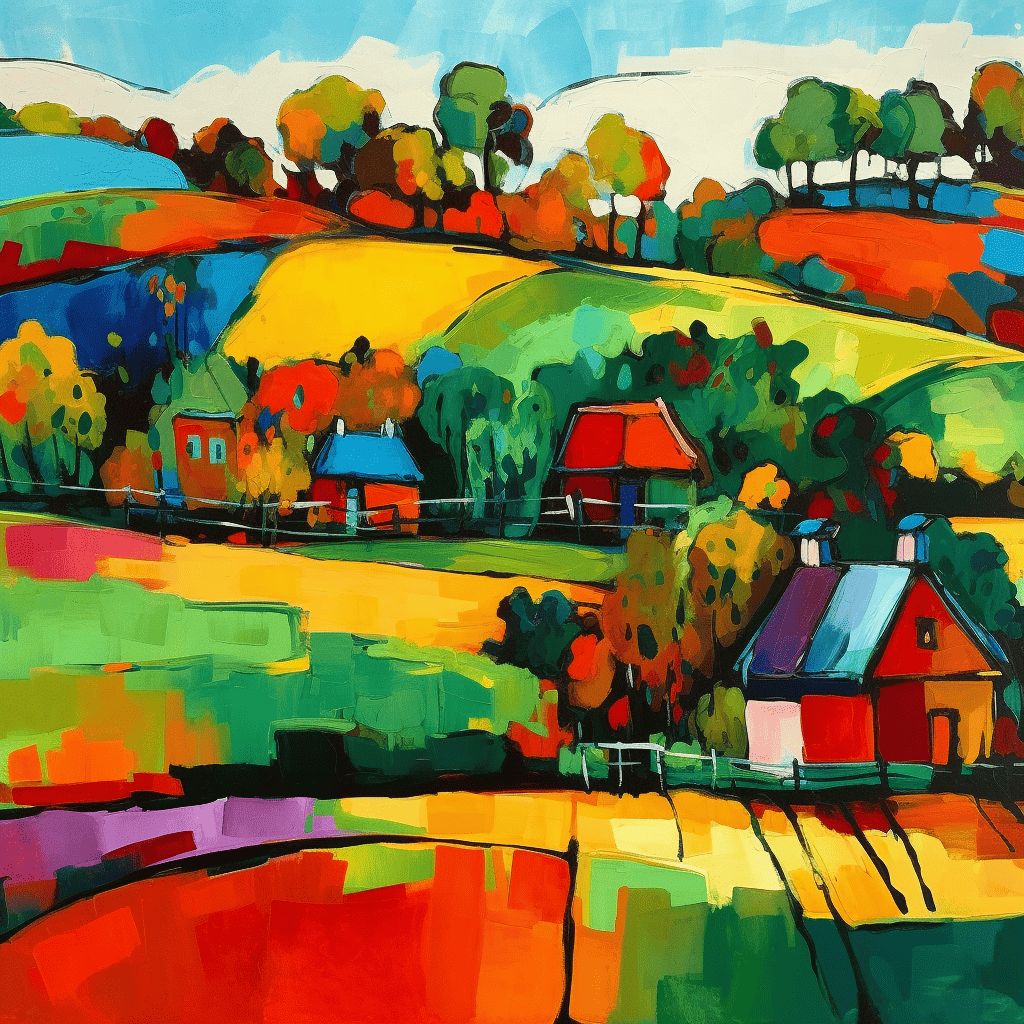Exploring the Vibrant World of Pop Art
Pop Art emerged in the mid-1950s as a rebellious art movement that challenged traditional notions of fine art. It celebrated popular culture, consumerism, and mass media, using bold colors, iconic imagery, and everyday objects to create visually striking artworks.
Andy Warhol, Roy Lichtenstein, and Claes Oldenburg are among the most influential artists in Pop Art. Andy Warhol’s screen prints of Marilyn Monroe and Campbell’s Soup Cans became iconic symbols of the movement. At the same time, Roy Lichtenstein’s comic book-inspired artworks showcased his signature Ben-Day dots technique. Claes Oldenburg’s oversized sculptures of everyday objects added a playful dimension to the movement.
Techniques and Characteristics
Pop artists embraced various techniques and methods to capture the essence of popular culture. They used silkscreen, collage, and commercial printing techniques to replicate and mass-produce imagery from advertisements, newspapers, and consumer products. These techniques allowed artists to create multiple versions of the same image, blurring the line between art and mass production.
Bold, vibrant colors, flat and graphic imagery, and a focus on popular culture characterize Pop Art. Artists often incorporated recognizable symbols, such as soda bottles, comic strips, and celebrities, into their artworks. The use of irony, satire, and humor was prevalent as artists sought to comment on the pervasive influence of consumerism and media in society.
Historical Significance
Pop Art emerged as a response to the consumer-driven post-war society and the rise of the media age. By elevating everyday objects and popular imagery to the realm of art, Pop Art challenged the elitism of the art world and democratized artistic expression. It blurred the boundaries between high and low culture, paving the way for subsequent movements like Neo-Pop and Street Art.
Notable Artworks
One of the most iconic Pop Art pieces is Andy Warhol’s “Campbell’s Soup Cans” (1962), consisting of 32 canvases depicting various flavors of Campbell’s Soup. Roy Lichtenstein’s “Whaam!” (1963) is another famous artwork inspired by comic book panels and featuring a bold depiction of a fighter jet.
Pop Art continues to inspire contemporary artists who explore themes of consumer culture, media saturation, and celebrity obsession. Artists like Jeff Koons and Takashi Murakami have embraced Pop Art’s aesthetic and integrated it with contemporary elements, creating provocative and visually captivating artworks.

Comparisons and History
While Pop Art shares some similarities with Dadaism and Surrealism in its use of found objects and subversion of traditional art, it stands apart with its focus on popular culture and mass media. Unlike Abstract Expressionism, which emphasized emotional expression, Pop Art adopted a more detached and analytical approach.
Pop Art’s impact on art history is profound. It challenged the dominant art establishment, blurred the lines between high and low culture, and brought art closer to everyday life. It influenced subsequent art movements, such as Neo-Pop and Street Art. It transformed the way we perceive and appreciate art in the modern world.

The Pop Art scene above “Vibrant Rural Symphony” was created by the blog author using artificial intelligence and is available for purchase as a jigsaw puzzle from the Matthew’s Planet online shop.
References
For further exploration of Pop Art, check out these resources:
- “Pop Art” by Tilman Osterwold (Paid Link)
- “Pop Art: A Critical History” by Steven Henry Madoff (Paid Link)
- The Museum of Modern Art (MoMA) in New York City features an extensive collection of Pop Art works.
Pop Art Color Palette
| Descriptive Color | Basic Color | HEX Code | CMYK | Color Sample |
|---|---|---|---|---|
| Poppy Red | Red | #FF3B30 | 0, 95, 90, 0 | |
| Canary Yellow | Dark Yellow | #FFD60A | 0, 10, 95, 0 | |
| Electric Blue | Blue | #007AFF | 90, 50, 0, 0 | |
| Grass Green | Green | #4CD964 | 70, 0, 100, 0 | |
| Purple | Purple | #5856D6 | 50, 60, 0, 0 | |
| Neon Pink | Dark Pink | #ff1493 | 0, 80, 20, 0 | |
| Hot Pink | Pink | #ff69b4 | 0, 70, 10, 0 | |
| Neon Blue | Light Blue | #00bfff | 60, 0, 0, 0 | |
| Neon Yellow | Yellow | #ffff00 | 0, 0, 100, 0 | |
| Neon Green | Light Green | #39ff14 | 70, 0, 100, 0 | |
| Lime Green | Mid Green | #32cd32 | 70, 0, 100, 0 |
Summary
Whether you’re drawn to its vibrant colors, iconic imagery, or playful and provocative nature, Pop Art continues to captivate audiences and challenge conventional ideas of what constitutes art. Its enduring influence on contemporary art and popular culture is a testament to its lasting impact. By exploring Pop Art’s origins, influential artists, techniques, key characteristics, and historical significance, we understand its importance in art.
In conclusion, Pop Art remains a captivating and influential movement that revolutionized the art world. Its celebration of popular culture, bold aesthetic, and critical commentary on society continue to resonate with audiences, making it a vital part of artistic discourse. Whether you’re a seasoned art enthusiast or a casual observer, exploring Pop Art will inspire and provoke thought about the intersection of art, culture, and everyday life.




